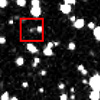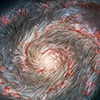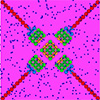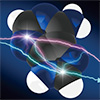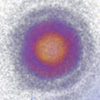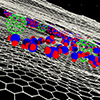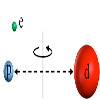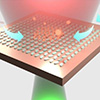Jul 31, 2023 (Nanowerk News) Scientists, under the guidance of Professor Barbara Pierscionek from Anglia Ruskin University (ARU), have achieved a groundbreaking breakthrough by utilizing nanotechnology to construct a 3D 'scaffold' capable of cultivating cells from the retina. This pioneering advancement opens the door to potential revolutionary treatments for a...
New algorithm ensnares its first ‘potentially hazardous’ asteroid
Jul 31, 2023 (Nanowerk News) An asteroid discovery algorithm — designed to uncover near-Earth asteroids for the Vera C. Rubin Observatory’s upcoming 10-year survey of the night sky — has identified its first “potentially hazardous” asteroid, a term for space rocks in Earth’s vicinity that scientists like to keep an...
New clues on the source of the universe’s magnetic fields
Jul 31, 2023 (Nanowerk News) It isn’t just your refrigerator that has magnets on it. The earth, the stars, galaxies, and the space between galaxies are all magnetized, too. The more places scientists have looked for magnetic fields across the universe, the more they’ve found them. But the question of...
Building blocks spontaneously construct 3D objects in solution
Jul 31, 2023 (Nanowerk News) Automating the construction of three-dimensional structures that are 10’s of millimeters in size would revolutionize manufacturing of devices for optical, electrical and biomedical applications. An economical process for constructing such 3D microstructures would be to "program" the constituent parts to spontaneously come together and build...
Are quantum computers the future of genome analysis?
Jul 31, 2023 (Nanowerk News) DNA sequencing technology, i.e., determining the order of nucleotide bases in a DNA molecule, is central to personalized medicine and disease diagnostics, yet even the fastest technologies require hours, or days, to read a complete sequence. Now, a multi-institutional research team led by The Institute...
A nickle-platinum nanoscale core with a platinum shell cracks oxygen molecules into useful ions
Jul 27, 2023 (Nanowerk News) Platinum (Pt) can act as a catalyst to make reactive oxygen ions for many applications. In this research, scientists used a method called electrochemical cycling to modify the surface of Nickel (Ni)/Pt nanoparticles. The scientists then examined the particles using a specialized X-ray scattering imaging...
Fullerene-pillared porous graphene with high water adsorption capacity
Jul 27, 2023 (Nanowerk News) Separation processes are essential in the purification and concentration of a target molecule during water purification, removal of pollutants, and heat pumping, accounting for 10–15% of global energy consumption. To make the separation processes more energy efficient, improvement in the design of porous materials is...
A simpler method for learning to control a robot
Jul 27, 2023 (Nanowerk News) Researchers from MIT and Stanford University have devised a new machine-learning approach that could be used to control a robot, such as a drone or autonomous vehicle, more effectively and efficiently in dynamic environments where conditions can change rapidly. This technique could help an autonomous...
How atomic nuclei vibrate
Jul 28, 2023 (Nanowerk News) Simple atoms have been the subjects of precision experimental and theoretical investigations for nearly 100 years, with pioneering work carried out on the description and measurement of the hydrogen atom, the simplest atom with just one electron. Currently, hydrogen atom energies – and thus their...
Innovative light enhancement in nanoscale structures could aid cancer detection
Jul 28, 2023 (Nanowerk News) A cutting-edge practice by two Vanderbilt researchers that enhances light in nanoscale structures could help in the detection of diseases like cancer. The work by Justus Ndukaife, assistant professor of electrical engineering, and Sen Yang, a recent Ph.D. graduate from Ndukaife’s lab in Interdisciplinary Materials...


